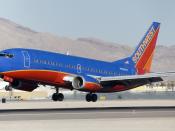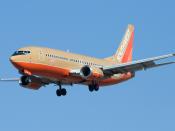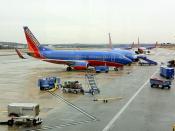The deregulation of the United States domestic civil aviation industry in 1978 saw airlines begin to compete freely. However, the capital-intensive nature of the business, along with undifferentiated products and services, has led to over 100 airline bankruptcies since then. In the light of this context, Southwest's ability to compete is particularly interesting as it has not only continued to expand, but has been the only one to earn a profit every year since 1973 (Freiberg, 1998, p. 4-5).
Today, Southwest is the fourth largest major airline in America, flying more than 64 million passengers a year to 58 cities (Southwest Airlines, 2002). Southwest attributes its success to its unique business model of rock bottom fares, low costs, and outrageous customer service that entails getting passengers and their baggage to their destinations on time and ensuring that they have some fun along the way (Peters, 1998, p. xiv). This business model is the basis of the airline positioning itself as a low fare airline that is fun to fly.
Southwest does not assign seats on its flights in line with its business model of keeping its costs and fares low. Not assigning seats gives the airline the advantage of helping cut boarding time to twenty minutes and reducing costs by reducing ground time. The principle here being that lower unit costs per flight and higher revenues are achieved by increasing the number of hours that an aircraft flies (Freiberg, p. 82-82). Thus, the aforesaid and several other cost cutting measures have enabled Southwest to successfully occupy the position of a low fare airline. The airline fulfilled its second positioning dimension of 'the airline that is fun to fly' through developing the concept of 'luv.' Everything the airline does is seen to revolve around this concept, including the low fares and...


